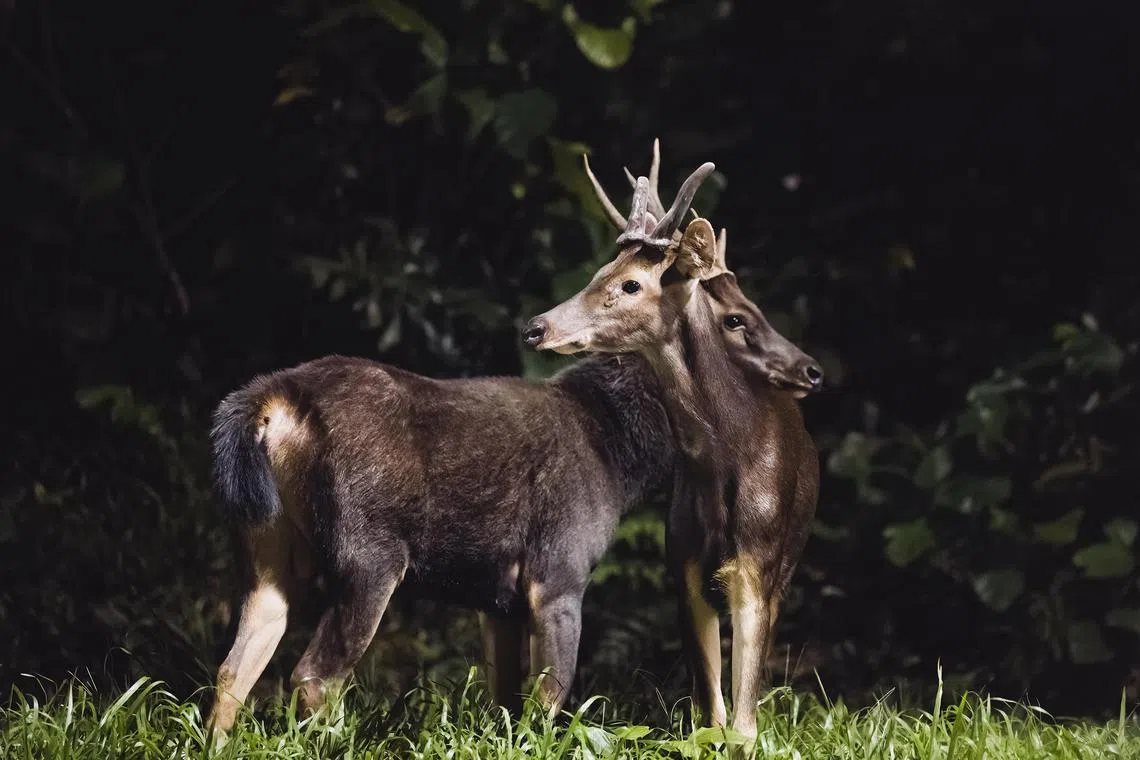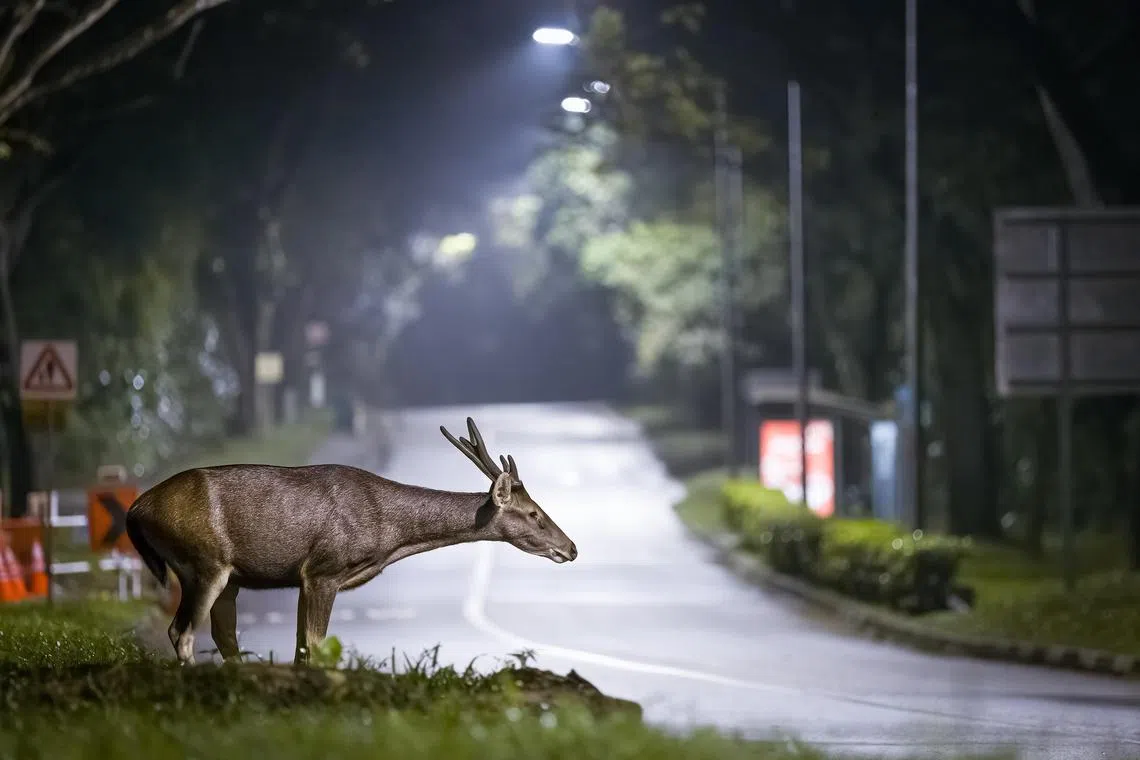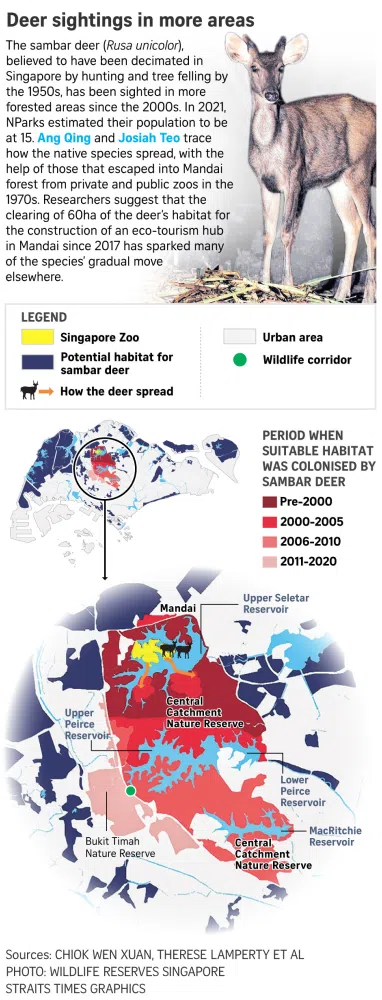Sambar deer making a return in Singapore, study shows
Sign up now: Get ST's newsletters delivered to your inbox

The report said the mammal’s numbers are estimated to be growing in various forested areas.
PHOTO: COURTESY OF TAN YONG LIN
Follow topic:
SINGAPORE – Sambar deer, believed to have been wiped out in Singapore as at 1950, are making a comeback after several escaped from public and private local zoos in the 1970s, a recent study has found.
The report, published on Feb 16 in the journal Conservation Science and Practice, said the mammal’s numbers are estimated to be growing in various forested areas, including parts of the Central Catchment Nature Reserve near MacRitchie and Bukit Timah.
In 1997, the Nature Society (Singapore) estimated in a report that there were three deer in the wild.
In a separate 2021 study, the National Parks Board put the number at around 15. The animal is currently listed as a vulnerable species on the International Union for Conservation of Nature’s Red List of Threatened Species.
The recent study by 24 researchers around the world, from institutions including the University of Queensland and Nanyang Technological University, looked at the unassisted spread of wild boars and sambar deer in Singapore over time.
It drew on a variety of sources, including interviews with wildlife experts and data from motion-activated cameras between 2009 and 2020, making it the most comprehensive camera trap study to date.
Researchers found that the deer likely recolonised parts of the forests here after escaping from enclosures, including those in the Singapore Zoo, in the 1970s.
In part, this was deduced from pictures of the deer having artificially notched ears, which suggested that they were once in captivity, since the technique is commonly used by humans to identify animals.
The resurgence of sambar deer might be beneficial for Singapore’s ecosystems in ways such as seed dispersal, it added.
These findings were welcomed by local wildlife photographer Tan Yong Lin, who has been photographing the creatures since 2022.
He said: “It’s a good thing that we are able to sustain a large animal species such as sambar deer in Singapore.
“To coexist, we need to consider educating people about their presence in the areas where they may be seen, and how to behave when we encounter them. These animals are extremely shy, and we do not want to do anything that may scare them onto roads with heavier traffic.”

A sambar stag waits by the side of a road in the Central Catchment Nature Reserve on Feb 5, 2023.
PHOTO: COURTESY OF TAN YONG LIN
In 2022, a sambar stag was killed after getting struck by oncoming traffic
The researchers also found that sambar deer have suffered from human development.
After 2016, the population in Mandai dropped sharply over a period of three years as 64ha of land was cleared for an eco-tourism hub, which is set to house the relocated Bird Park and a new Rainforest Park when completed.
Increased sightings in MacRitchie and Bukit Timah suggested that the deer had moved to these habitats, the report said.
While the population may be growing, it still remains small and fluctuates over time, it added.
This means that there are unlikely to be any risks posed by overpopulation despite the absence of natural predators and hunting.
Going forward, Mr Marcus Chua, a co-author of the paper, called for a standardised long-term monitoring study to derive a clearer picture of the state of wildlife in Singapore’s forests and other green spaces.
Mr Chua, a mammal scientist at the National University of Singapore’s Lee Kong Chian Natural History Museum, said: “This allows us to predict what is likely to happen to the population of wildlife in Singapore, and make appropriate management decisions.”

This article has been updated for clarity.

